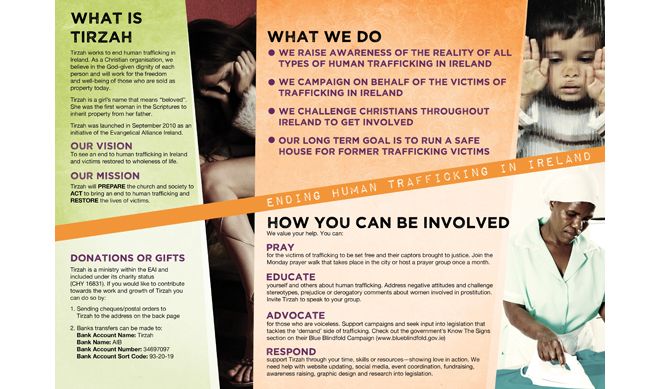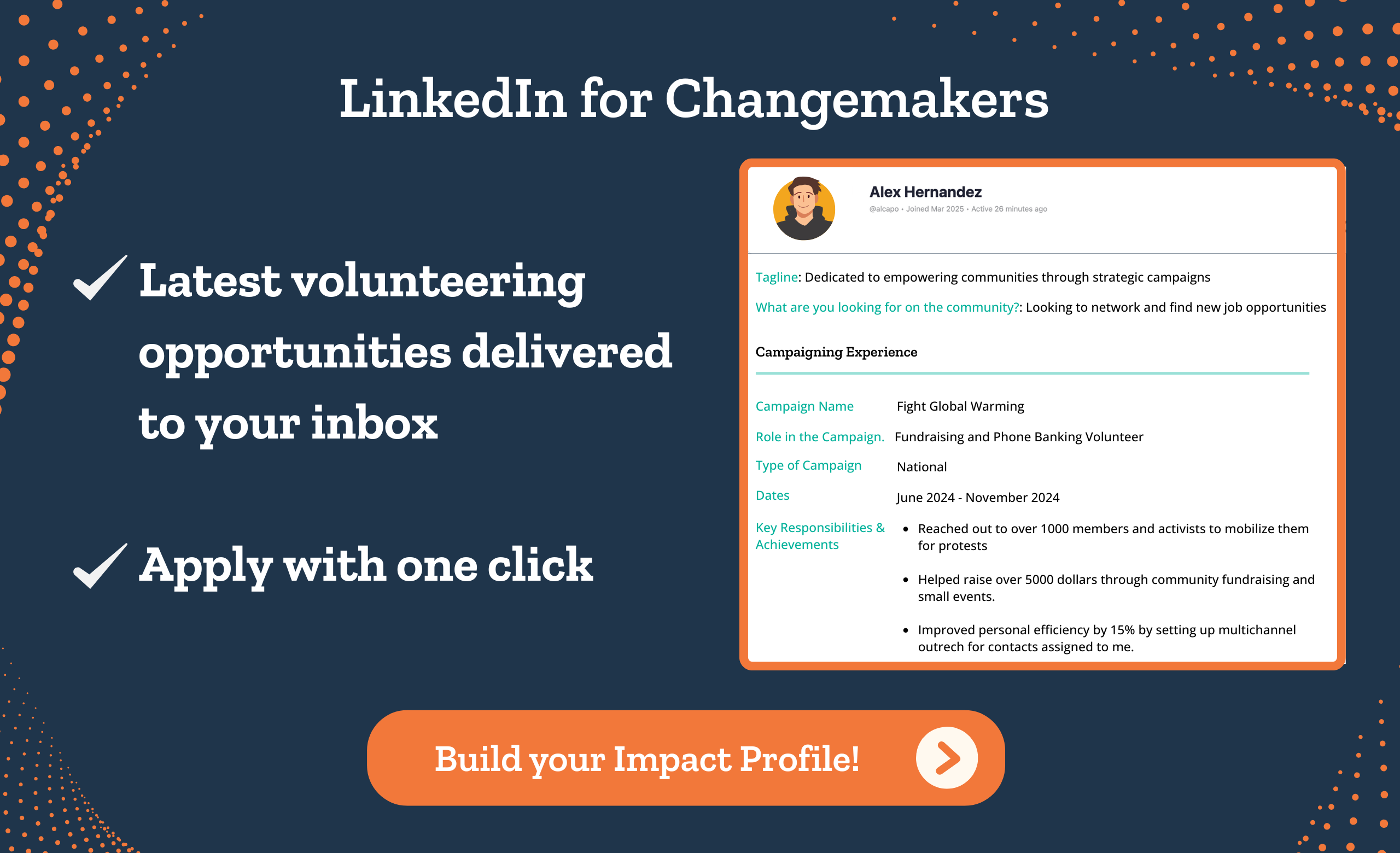Table of Contents
It’s easy to encounter an issue in your community and tell yourself that someone else will fix it. This behavior stems from the socio-psychological phenomenon of “Diffusion of Responsibility.” But in a grassroots campaign, this mindset can be a major hurdle. Without active political participation, a grassroots campaign struggles to gain momentum and drive real change.
Every individual is trapped in a passive bubble of inaction. If we want to see change, we must break free of it and take action.
Grassroots advocacy campaigns revolve around issues that directly affect you individually or collectively. This means that your civil rights movement’s participants are highly motivated. They are ready to get on the ground and find a way to solve the problem.
Do you have an issue in your mind that you want to resolve?
This article takes you through the steps on how to start a grassroots non profit organization and your grassroots advocacy campaign.
What is a grassroots campaign?
A grassroots campaign or movement mobilizes ordinary people of a given region or community to bring about social, political, environmental, or economic change. Grassroots political movements and organizations use collective action (like marching or calling decision-makers or political parties) to influence local community, national for social justice, or even international policy changes.
Typically, grass roots movements mobilize people who are either affected by or are deeply concerned about the issue you’re trying to address.
In practice, there are two major types of grassroots efforts:
- Efforts to mobilize individuals either to turn out to vote or to vote a certain way in an upcoming election.
- Efforts to mobilize individuals to contact a policymaker or other individual with influence to take a particular action.
But before taking action, you need a plan to set the stage and get the show going.
How to start a grassroots campaign: Steps to starting your grassroots advocacy campaign
Define advocacy for yourself
The extent of the different kinds of advocacy is hard to put in a single box. As someone who plans to start a grass roots advocacy campaign, you must define what advocacy means.
What kind of cause will you champion, and what activities will you and your campaign undertake?
A distinction to make here is between political lobbying and advocacy.
Lobbying is the act of approaching lawmakers to influence legislation. Lobbying is always included in advocacy and is undoubtedly a big part of it, but not all advocacy is lobbying.
Here are a few other ways you can advocate for a cause:
- Education: It involves raising awareness about your cause to bring in supporters and convince them to take action to bring about change.
- Litigation: This involves working within a court system to push for your cause. While not directly influencing legislation, it is connected with the law.
- Organizing: A primary goal of advocacy is to organize and mobilize supporters. Funneling and amplifying your supporters’ voices is how your grassroots advocacy campaign can bring about lasting change.
Many advocacy tools help you contact people of interest and connect them with their legislators. Define your advocacy campaign early on to make choosing the tools that will get the job done easier.
Identify your cause

The first step to starting a grassroots movement is to identify your cause. Yes, you probably do have a cause in mind. But rather than look at the overarching problem, break it into smaller, solvable pieces.
After you’ve defined what advocacy means to you, the next step is to identify your cause. Here’s what you need to do:
- Break down the cause into smaller solvable pieces. You probably might have a cause in mind. But, rather than looking at the overarching problem, break it down.
Accept that you cannot solve every challenge facing your community. If the issue is that of polluted water or natural resources, the cause you want to fight could be dumping industrial waste, sewage, or untreated wastewater.
- Brainstorm ideas that could lead to a possible solution. You will need the help of other stakeholders. This can include others in your area affected by the problem and organizations willing to take up the mantle for your cause.
- Create an advocacy strategy. Once you pinpoint the exact cause or causes and how you can fight them, create an advocacy strategy to solve them.
Commit to staying focused
Unless you already have a base of engaged supporters, your grassroots advocacy campaign will not gain momentum overnight. Most grassroots campaigns start small and gain momentum as they pull in more supporters through word of mouth throughout the community.
With so many other organizations and movements working on the same or similar problems, you will face trouble getting people interested in your cause. Win them over by staying focused on your mission.
Prepare the literature for your grassroots campaign
You’ll now know which issue to address and how you will achieve it. It’s time to put the strategy into words and create a detailed plan and campaign literature.
The plan should cover grassroots campaign activities, events, and task allocation for volunteers and staff. Having a written strategy in place helps align campaigning activities towards a specific goal and keep you on track to achieve that goal.

Ready your technology
A grassroots advocacy campaign relies on the support of people in your locality to grow and create an impact. This makes community engagement an intricate part of grassroots campaigning.
Unlike big firms, your grassroots advocacy campaign may not have money to spend on marketing strategies and political advertising. However, many tools are now available to cater to grassroots campaigners’ outreach needs.
Email and social media remain effective and affordable means to reach the community. You can use an open-source website creation tool like WordPress to create a basic website. It should have details about the campaign, how to donate, and any other campaign updates.
You can follow that up by creating a fundraising page on a site like GoFundMe and adding it to your website.

For community engagement, phone banks and peer-to-peer texting will provide the personalized engagement essential to grassroots advocacy campaigns.
To engage policymakers about the issues affecting your community, in-person meetings, and phone calls offer the most effective approach, followed by conventional mail, email, and social media.
| For tips on organizing your community the right way, check out this article: → Community organizing strategies for organizers Discover the 6 essential steps to successful community organizing. From creating change to building a stronger community, this guide has everything you need to make a real impact. |
Identify the core support for your grassroots campaign
Your core supporters are the ones who dedicate their time to your movement. With so many causes and campaigns out there, ask yourself why they support yours. Often, your most dedicated supporters will be those who are personally invested in your cause.
Identifying these supporters and channeling their energy is how you start creating the greatest impact for your campaign.
Onboard volunteers
Volunteers form the backbone of every grassroots advocacy campaign. They help with door-to-door canvassing, working the phone banks, data entry tasks, and staffing events.
Social media, emails, flyers on community boards, and reaching out to people who have volunteered are all good ways to promote your volunteer requirements.
You can include a call-to-action at the end of your phone banking script asking supporters if they want to volunteer. If text messaging is part of your campaigning efforts, you can create a sign-up campaign to recruit volunteers.
Tips on how to start a grassroots campaign effectively
1. Plan for and build a diverse group of supporters when you consider how to start a grassroots organization
While learning how to start a grassroots organization and focus on a community of people, getting a diverse group on board can make a more lasting impact.
Why?
When people from different communities/advocacy groups get involved, they can influence leaders’ informed decisions, banking on their support. The more leaders in the office you can influence, the easier it becomes to compel the administration to act.
When considering how to start a grassroots organization, have a plan to
- Collaborate with other communities to onboard support. Whether they are affected by the issue or not, having them on your side will be beneficial.
- Encourage existing volunteers and supporters to educate people in their network (friends, family, colleagues, etc.) and get them to support the cause.
You May Also Like: Guide to Devising Great Community Outreach Strategies That Win Big
2. Get insights from people who onboard
When organizing a grassroots advocacy campaign, many of your supporters will be those directly affected by the issue.
These people can be your best source of information regarding the ground reality and what needs to change. Getting insights from these supporters will help you better plan your campaign and understand how to start a grassroots organization to take relevant action.
To get these insights, you can:
- Include a field in your sign-up form that asks why the individual wants to support the cause or if he/she is affected by it. Follow up with those who give relevant answers.
- Hold regular meetings with volunteers to obtain their feedback during campaigning and determine whether strategies need to be changed or updated.
- Set up an internal communication system (like a Slack community) for people to share updates or any recent incidents (caused by the issue) that you can use for your campaign.
Remember that people not directly affected by the issue may also have valuable insights you can use. So, keep everyone in the loop.
3. Don’t raise an issue; tell a story
Stories work better than data in compelling people to take action. Stories (with a relatable character) help people establish a stronger emotional connection to the cause. The better the connection with the cause, the more invested they will be.
Apart from that, a story is more memorable, so it is more effective in educating people about the issue and why they should support it. Here’s what you should plan to do:
- Use the insights from volunteers and filter out personal stories that inspired them to volunteer. Make sure to support it with powerful visuals.
- Use simple language and back the story with data. You want your story to appeal to the masses, so ensuring it is easy to understand is critical. The data adds to the story’s credibility, motivating people to take action.
- Spread the story extensively and use it as the basis of your campaign to raise awareness and educate people about the cause. You can use social media, email, posters, flyers, etc..
| For more insights into writing a story for an advocacy campaign, check out this article: → The Art of Storytelling For Advocacy Campaigns |
4. Plan for slacktivism
While social media will be an important tool for spreading your message, many online supporters may not be motivated enough to take relevant action. They may follow your page or share your content but not go that extra mile that counts towards the real change.
However, if nurtured correctly, you could transform their slacktivism into activism. Make sure you have a plan for that.
- When thinking about how to start a grassroots organization, remove barriers to participation in your grassroots advocacy campaign. Emphasize the importance of small actions like “Liking” or “Sharing.” By letting people participate on their terms, you’ll be able to build a larger base of support that can be nurtured to take action later.
- To engage them more, reward these actions, maybe with a thank you note and a request for insights or a survey.
- Once they are more engaged with your community, start making other smaller asks, like signing an online petition, and gradually move to bigger asks, like sending a text or making a call. Use the ladder of engagement to turn them into strong supporters.
5. Empower your volunteers
Your volunteers and supporters are the greatest assets of your grassroots advocacy campaign. They are the ones who will sustain and lead your campaign to success.
Empowering these supporters will add to their motivation and unleash their creativity to achieve the set goals. Here are a few things you must do to empower supporters:
- Segment your supporters into groups and let your strongest supporters lead them. This helps you delegate and manage tasks better while also motivating others who would like to take up such responsibilities to work harder.
- Provide your supporters with the appropriate training and tools to take action and motivate others to do so. Many of your supporters may be deeply invested in your cause but may not have the means or knowledge to do something about it.
- Maintain transparency and ensure that all volunteers know how their actions are leading you to success. It serves as a reward for their efforts and keeps them motivated to continue doing so.
Once you’ve got your campaign off the ground, it takes a consistent long-term effort to see it through. With your community’s support, dedicated volunteers and staff, and an ongoing engagement plan with policymakers, you stand a much higher chance of building a successful grassroots advocacy campaign.
If you’re thinking of reaching your supporters through calls and text messages, you’ll need a tool to help you do it:

